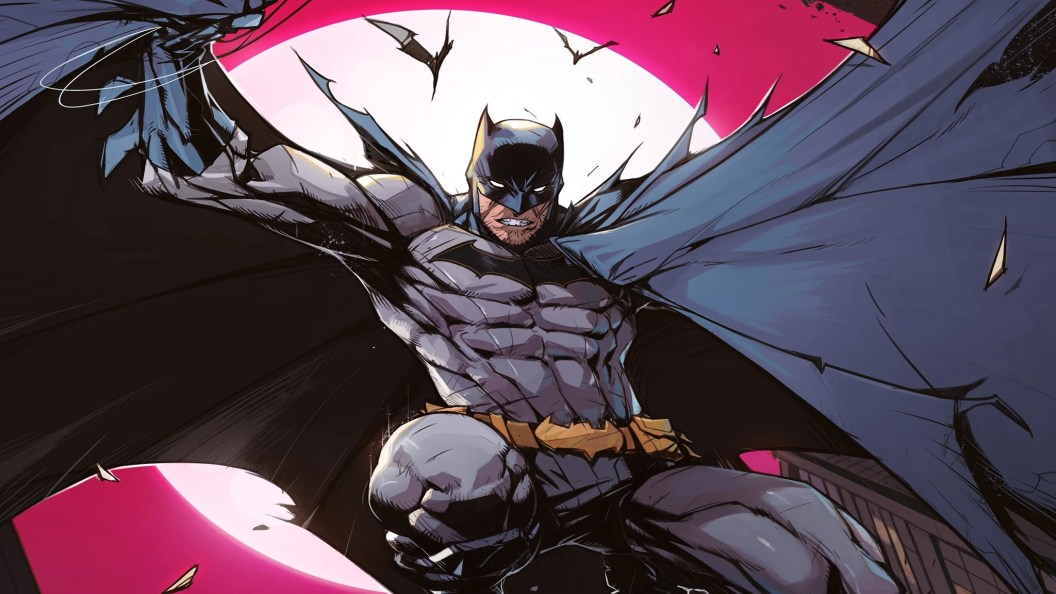
Batman has been at the center of some of DC’s greatest stories of all time. From The Dark Knight Returns to The Killing Joke, there’s no denying that Batman has incredible comics under his belt, but unfortunately, as much as every comic can and should draw inspiration from the great things that came before, sometimes they go a little too far. Tropes are useful tools for stories to use, either bringing back beats that the audience loves or being easily understood shorthand to cover necessary events that let them focus on telling the story they want to tell. However, some tropes are either massively overused, or should never have become as popular as they have. Oftentimes, especially in recent years, it feels like the mainline Batman comics are repeating the same tropes to tell the same stories on repeat. None of these tropes are problems on their own, and stories that use them have a great place in comics, but right now they have been used three too many times. So, let’s take a look at ten tropes that have been used way too many times in Batman comics, and why they need to go.
1) Fighting His Allies

From “Gotham War” to “H2SH,” it seems that Batman is always fighting the people closest to him. More often than not, it’s even his own children that he’s throwing hands with in recent years. Despite the fact that the Batman Family is one of the largest and closest superhero families out there, Batman has a serious reputation as a loner. So when this trope is evoked, the story always follows the same beats of Batman trying to handle something on his own and pushes everyone away, which looks bad and makes them mad. Then, when it looks like Batman has gone too far (either because of mind control, lack of communication, or plain bad writing), his allies will decide they have to take him down and an all-out brawl will ensue. It always feels contrived and is only ever used to drum up pointless drama. People love the Batman Family, and especially other characters Batman works closely with, like Jim Gordon and the Justice League. Yet we hardly get them teaming up casually anymore, and frankly, always reading about how angry everyone is at Batman is just exhausting when you’re trying to enjoy a good comic. Let them work together, DC.
2) Villain Takes Over Gotham

How many times in the past decade alone has a villain completely taken over Gotham City? Off the top of my head there was “Fearstate,” “Joker War,” “Gotham Nocturne,” “City of Bane,” and to a lesser extent “Gotham War.” Needless to say, it feels like a different supervillain declares themself the new ruler of Gotham every other week, and because it happens so often, the stakes don’t feel nearly as high anymore. Instead of being a scary new reality that places Batman on the back foot, it’s become a bog-standard plot beat that everyone does. It really brings up the question of why is it so easy for supervillains to just rule a city, and how does that even work? Why is it so easy for villains to waltz up and just start enforcing their rule? There are always explanations inside the stories, but it makes Gotham feel like such a passive, impressionable concept instead of a massive city that has been experiencing supervillains for decades. It’s too simple to have such a complicated process happen repeatedly, and has made the whole concept feel dry.
3) Bat-God
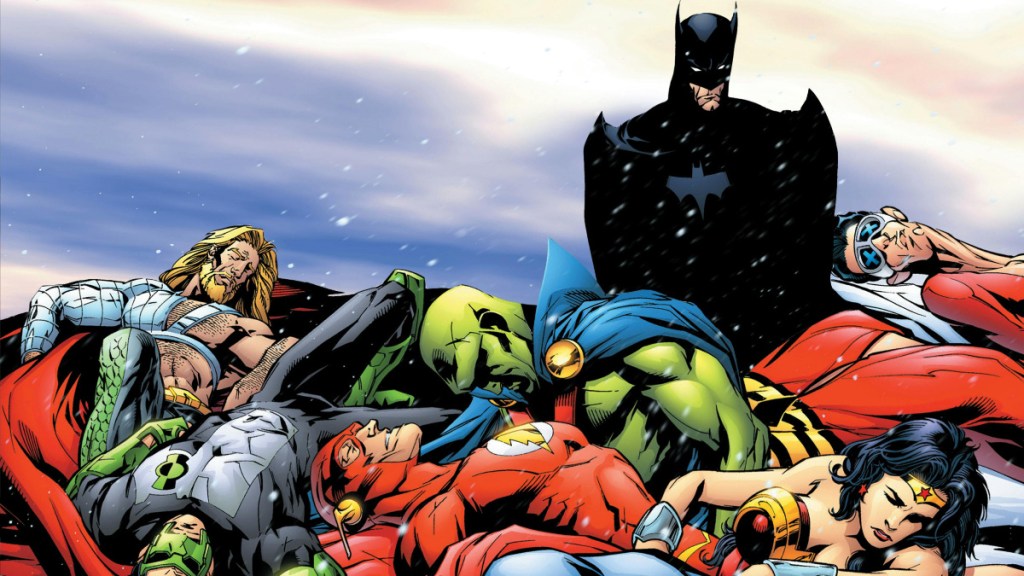
Tower of Babel is a great story that I love to pieces, but ever since it was revealed that Batman kept secret plans to take down his allies, the idea that Batman can take down anyone with prep time has become prevalent. This isn’t a bad thing on its own, and frankly isn’t that much of a problem in Batman specific comics, but it can be so annoying when Batman appears in other people’s comics. Instead of showing Batman’s intelligence and skills, this trope will usually be used to just let Batman escape unwinnable situations without explanation simply because he’s Batman. The Dark Knight being able to stand shoulder to shoulder with the veritable gods of the Justice League is one of the coolest aspects of him, showing the power of a single person’s resolve, but these stories almost make it seem like Batman isn’t a person at all. I’m not saying that everything Batman does has to be explained or entirely possible, it shouldn’t be, but one of the most fun parts about Batman is seeing how he wins from an unwinnable position. This trope just skips straight to the end, and we lose something awesome along the way.
4) Bane Breaking Batman
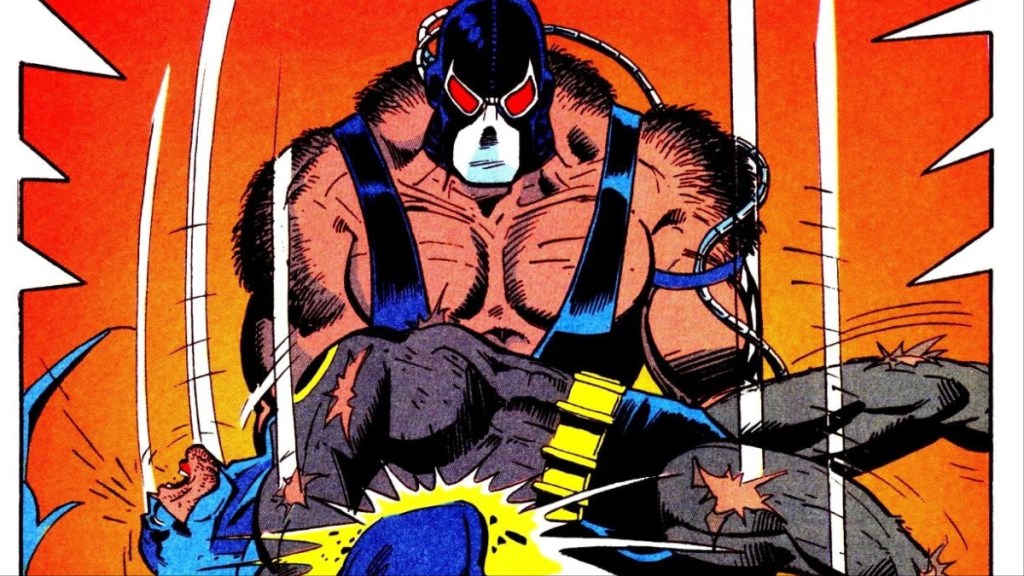
Bane is one of Batman’s greatest villains, being able to both outpace him in physical capabilities and match his intellect. Bane leading Batman on a three day chase around Gotham City to weaken him, culminating in Bane destroying his spine when the Dark Knight isn’t even capable of fighting back as his debut is one of the greatest moments in Batman comics. The unfortunate thing about this moment being so iconic is that it is always being called back to. Every time Bane shows up it feels like half of his screentime is him shouting about how he broke Batman, which happened over thirty years ago at this point. Bane’s unyielding focus on that one thing he did really makes it feels like he peaked with his first appearance, which is a darn shame, because he’s such a cool villain. Just let Bane go five minutes without referencing breaking Batman, please. He’s more than a one trick pony.
5) Being Too Dark

There seems to be this strongly held belief in DC editorial that Batman cannot be happy. He must always be suffering, at odds with the people close to him, and never be able to generally be upbeat for more than a one-off issue every now and then. Batman, for the most part, has to be facing constant personal adversity to the point where people have been comparing him with Marvel’s treatment of Spider-Man. The past few years have shown Batman on a continuous downward spiral from one horrible life event to another, with very little time to process one before the next occurs. Batman has a reputation for being a dark character, and he certainly can be, but he can also be light-hearted and wholesome. What makes Batman so great is that he can equal parts be a brooding, vengeance driven character as he can be a bright spot of light that lifts up those who need it. Neglecting Batman’s darkness or his light is neutering his character.
6) The Escalating Joker
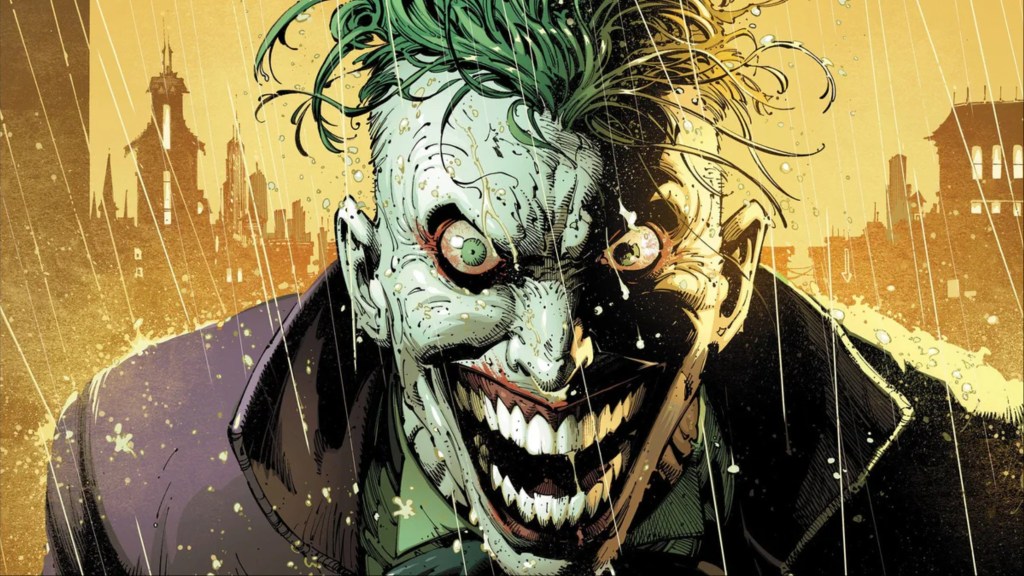
The Joker is Batman’s archenemy for obvious reasons. Their dynamic is incredible, and some of Batman’s best stories involve the Joker in some way. The Killing Joke,The Dark Knight Returns and “Death of the Family” perfectly capture the nuance of their relationship through the lens of Joker committing horrible atrocities. Unfortunately, people seemed to have learned the wrong lesson from those stories, thinking that what made them good is the Joker going above and beyond in his murder spree. Now, not only does the Joker show up way too often, but every time he has to top the devastation left behind in his last romp through Gotham. The modern Joker is all flash and no substance, and that rips away the very things that make the Joker such a compelling villain. He used to be this character driven by an impossible to understand humor. He was obsessed with Batman and a murderous psychopath, yes, but there was a throughline that he would only do things he thought were funny. There’s no dark humor in the Joker any more, just darkness. The public perception of the Joker sees him as so inhumanely evil that he can’t even do villain team ups anymore because every other villain sees him as the embodiment of evil. He’s not even a clown anymore, he’s just a pale Victor Zsasz.
7) Being Deconstructed
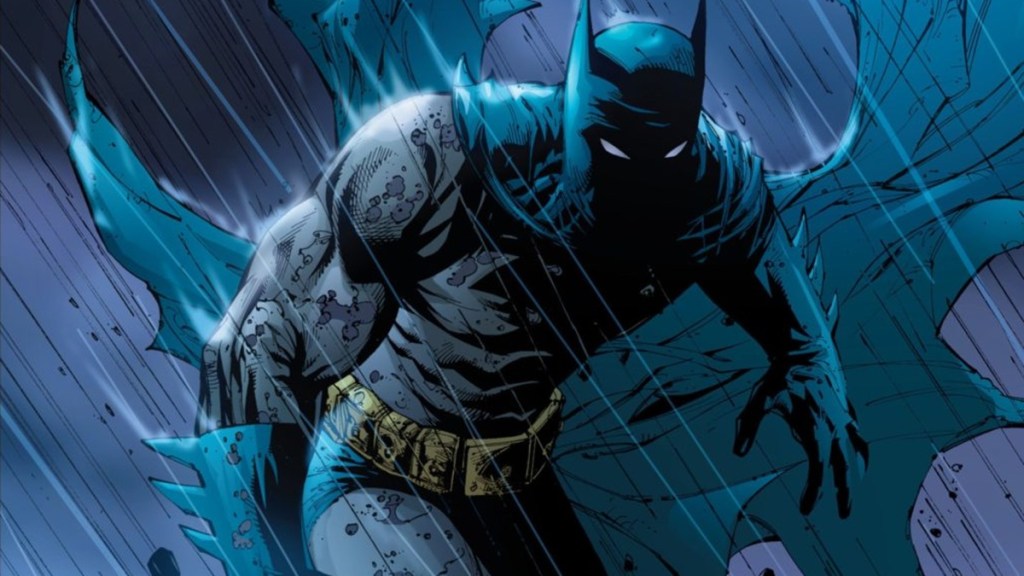
Deconstructions of characters can make for the best stories told with them. It gives the writer a chance to break down a character to their most essential parts, and question what it is that drives them in a way that can explore why that’s good or bad. Daredevil’s “Born Again” storyline is the most famous version of this, and it’s widely regarded as the best Daredevil story ever told. However, deconstructions only work if they break the character down in a fair way, and the character is built back up bigger than ever in the stories following. Neither of those things have happened when Batman was deconstructed in the past several years, and it’s been happening constantly. It feels like every new run follows the same arc of Batman having to face some thing he does that hurts more than it helps, and his entire character is questioned as he is brought back to his bare essentials, with Bruce building himself back up and promising to do better, only to do it all over again at the start of a new writer’s run. Everyone is constantly questioning why Batman is a hero and if he should be one at all, to the point where they forget to show us Batman actually being a hero. Comic books are supposed to be fun, and there’s nothing fun about watching your hero constantly be shafted for existing. Deconstructions can be great, but only in moderation.
8) Complicating the Waynes
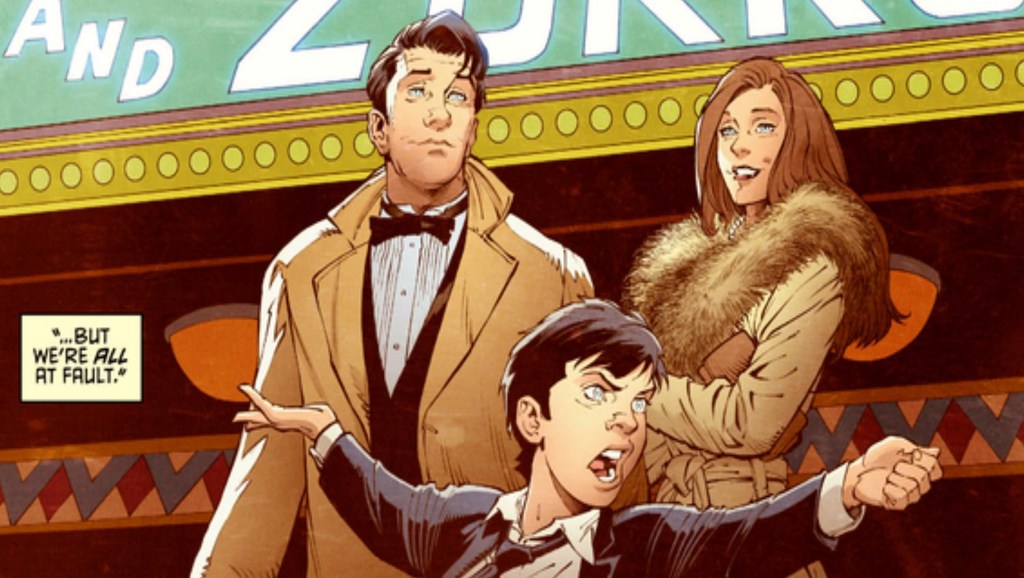
Thomas and Martha Wayne were good people, and so their death had a terrible impact on both the young Bruce and Gotham City. Before Batman, the Waynes were the last good family in Gotham. They were the only ones who fought to save the city from itself, even when everyone else told them they were crazy, because they cared about everyone and wanted to see their home flourish. They walked through Crime Alley that night because they weren’t afraid of Gotham, and they didn’t want Bruce to grow up to be afraid of it either. Their lives are Bruce’s inspiration for protecting his home, but their deaths only have this much impact if they were actually good people. Writers tend to love going back and adding dark secrets to the Wayne family name, to the point where people are questioning if the Waynes were good people at all. I’m not saying that the Waynes can’t be complicated or flawed people, but they also can’t be constantly swamped in controversy that blames them for the problems of Gotham. The Waynes need to be the light in Gotham City’s dark world, otherwise the importance of their legacy would be massively diminished, and Batman has always tried to live up to their legacy.
9) Calling Robin a Mistake

Robin has been an essential part of Batman’s mythos since before he had his own comic book. Batman needs Robin, the Boy Wonder to his Caped Crusader, the light to his darkness, but so often you will see storylines that criticize the very idea of Robin and call Batman an outright villain for letting a child fight crime as he does. Phillip Kennedy Johnson’s “Memento” arc in Batman and Robin (2023) constantly assails Bruce with this very question and blames him for all the pain and death Robin has faced. To this argument I can only say one thing; this is a comic book. Yes, if Batman and Robin actually existed in the real world, then letting a child fight serial killers and monsters would be horrible, but they aren’t real. We’re willing to believe Batman and all of Gotham City exists, but we have to draw a line at a kid being able to fight alongside him? Robin was originally created to give young readers someone they can see themselves in, and Robin as a hero is as popular as he is because so many young people around the world resonate with him. It feels hypocritical to criticize Batman for bringing in Robin, when there are dozens of beloved teen heroes and other sidekicks that nobody ever has a problem with. Even beyond the suspension of disbelief argument, every Robin has reasons to want to be Batman’s sidekick and has shown multiple times that they would find their way into the vigilante life even without the Caped Crusader’s influence. Being Robin helps these characters become better people. Robin is a beautiful, essential part of Batman’s mythos, and we should stop criticizing him for a character we love, that exists for reasons that are both valid in meta and in-universe ways.
10) Overarching Stories
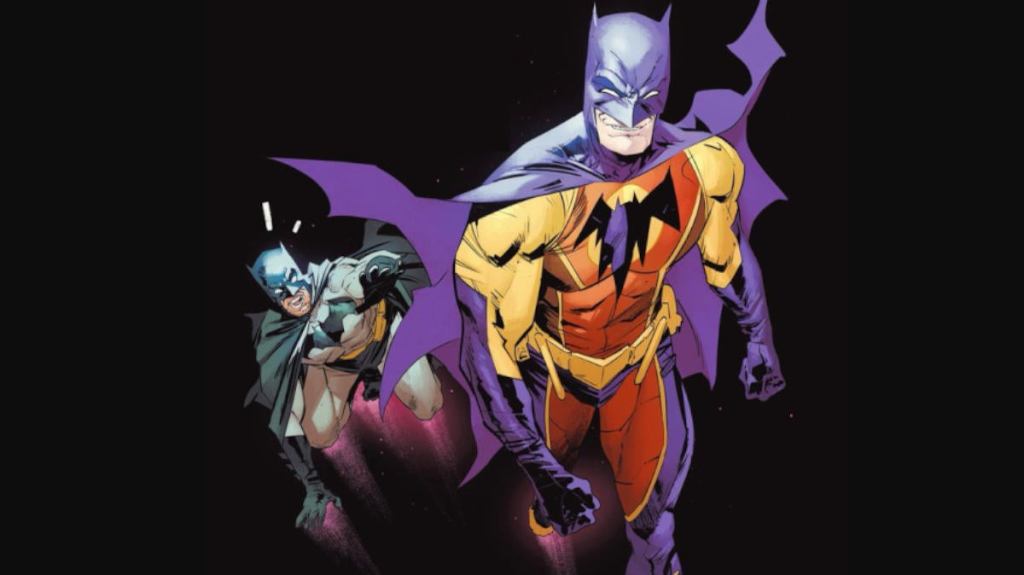
As much as I love planned, multi-arc storylines, it seems like every Batman run is constantly building up to some massive event. Every issue serves to build up to them, and sometimes these events are great and sometimes they’re not, but that’s not the point. The problem is that Batman is either always building up to some massive change, or coming down from one and immediately has to prepare for the next. There are almost no standalone Batman arcs anymore, as everything is connected to some fifty-issue shakeup. Chip Zdarsky’s controversial run on Batman all centered around the fight against Zur-En-Arrh and Failsafe, but most people consider the best part to be the final “Dying City” arc, which was entirely disconnected from everything else around it. Most people loved his run when it started, with one of the strongest few opening issues Batman has had in years, but them being tied to the messy event drags them down so much in some fans’ eyes. Batman should have massive events, but we need smallscale stuff too. We never see Batman just fight crime anymore, or solve mysteries that aren’t one layer of a villain’s master plan. Overarching stories are great, but Batman also needs to do short, complete arcs where he fights crime and saves his city. If we’re always redefining Batman’s status quo, we lose what that status quo is in the first place.
So there we have ten tropes that people desperately need to keep away from Batman comics for a good bit of time. Again, none of these things are bad on their own, but they become unbearable when they are constantly shoved in our faces on repeat. What trope do you hate to see overused in Batman’s comics? Let us know in the comments below!
The post 10 Most Overused Tropes in Batman Comics That Need To End appeared first on ComicBook.com.


